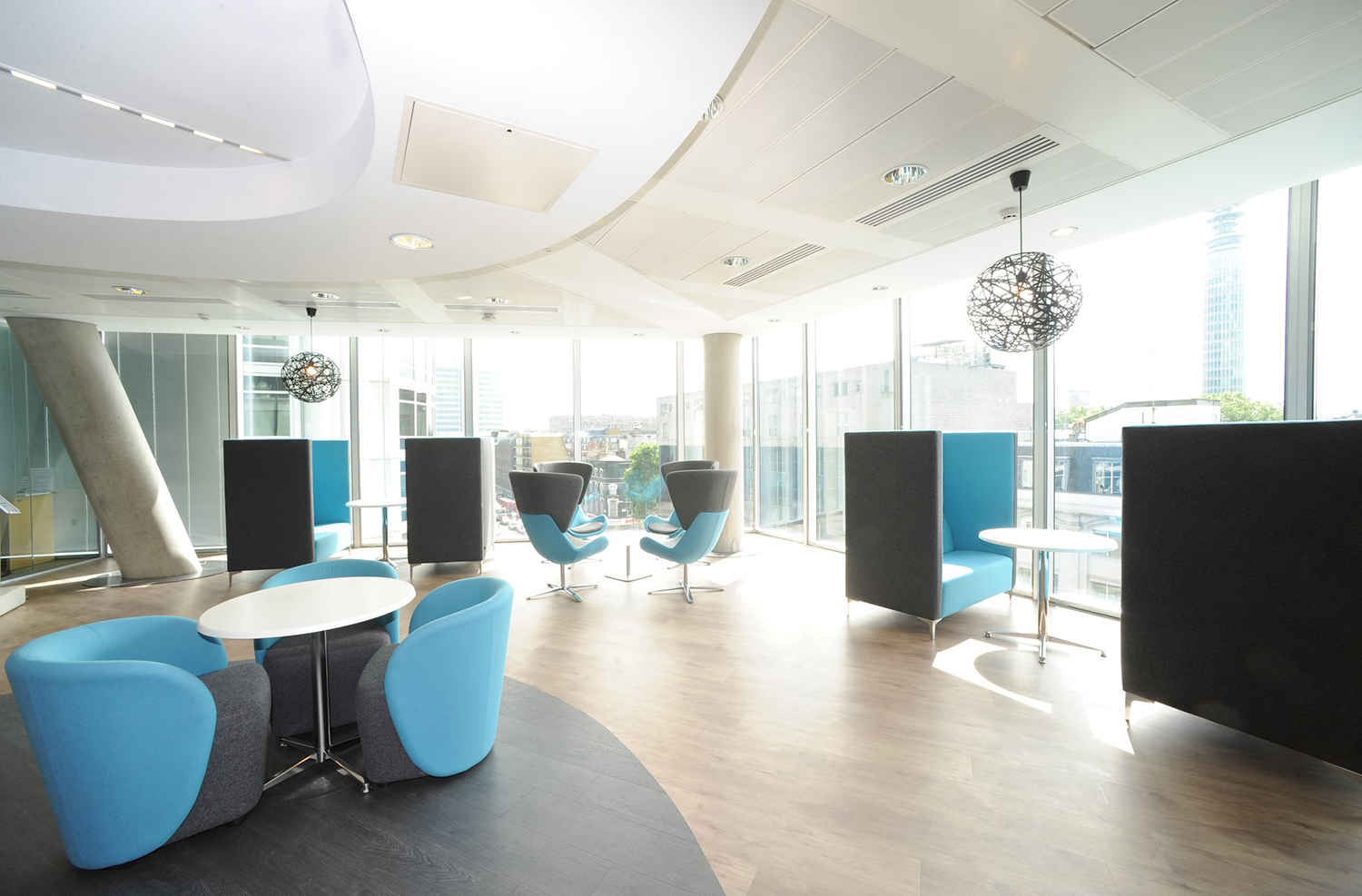
March, 2019
There are many options for improving staff and overall office productivity. You can improve business processes so they are more efficient, offer meaningful rewards for good performance and you can also create an inspiring office design. Here are just some of the tried and tested ways in which you can design an office to help boost the productivity of staff.
1. Utilise nature in your office design
Plants improve the humidity of a room and reduce harmful components in the air such as dust, bacteria and carbon dioxide. This can help to reduce the frequency and severity of headaches and dizziness.
Studies have shown countless times that these natural finishes within an office can improve productivity by up to 40%. You can use natural finishes like wood and stone for your office furniture, as well as considering cork partitioning and living walls.
A lot has been written about biophilic design on wellbeing, so it is no surprise it ranks as a key priority for increasing productivity.
2. Make your office bright
Natural light is known to have a positive impact on the morale and health of employees. Fluorescent lighting has been proven to cause significant eye strain and headaches that reduce productivity. At the same time, when workers are close to windows, they are found to have more restful sleep, which can help with the quality of work produced. It is important that all aspects of your office help to maximise natural lighting.
Allowing all office workers access to windows is also important. About one in five people in the UK experience seasonal defective disorder. The symptoms for this can include loss of concentration, anxiety and overeating. These symptoms can be directly linked to lower levels of productivity.
3. Use uplifting colours in the design
The colour scheme of your office will have a significant impact on staff. Some colours will make them happy, sad or creative and it is about using the right blend to bring out the emotions and work ethic you’re looking for.
To get the right mix, you want to first avoid bland colours such as white, grey and beige. These are used to make rooms appear larger when leasing office space, but they don’t offer much value in terms of productivity. In fact, these colours can cause workers to become sad and feel less able to work.
The best colours to use in your designs, according to some studies, have been green and blue. Blue and green are natural colours and they are thought to help with productivity. Another highly sought after colour is yellow as it inspires workers to be innovative and optimistic.
4. Provide space for exercise
You might be tempted to try to squeeze as many people into a space as possible, but this can often mean people have less space to move around in. Exercising during the working day, whether it is working at a standing desk, or moving around the office to stretch the legs, can help relax strained muscles and improve productivity.
You can go even further by offering spaces for staff to unwind such as games areas with table tennis, Wii games or yoga mats. Encourage staff to use these areas and you’ll see they are happier and more productive at their work stations.
Make your office look nice and productive
An office design has to look nice, but it also has to be functional and that means thinking about whether or not staff will be productive in those spaces. The design of office space has become an essential consideration in attracting talent, and from an employers perspective as well as an employees perspective, there has to be a return on investment. Some from very simple steps can make this outcome a likely reality.